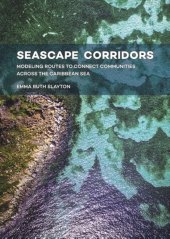 Neuerscheinungen 2018Stand: 2020-02-01 |
Schnellsuche
ISBN/Stichwort/Autor
|
Herderstraße 10
10625 Berlin
Tel.: 030 315 714 16
Fax 030 315 714 14
info@buchspektrum.de |

Emma Ruth Slayton
Seascape Corridors
2018. 314 S. 24 Farbabb. 257 mm
Verlag/Jahr: BOOKS ON DEMAND; SIDESTONE PRESS DISSERTATIONS 2018
ISBN: 9088905789 (9088905789)
Neue ISBN: 978-9088905780 (9789088905780)
Preis und Lieferzeit: Bitte klicken
There is little evidence of the routes connecting Amerindian communities in the Caribbean prior to and just after 1492. Uncovering possible canoe routes between these communities can help to explain the structure, capabilities, and limitations of the physical links in their social and material networks. This book evaluates how routes connecting islands indicate the structure of past inter-island networks, by using computer modeling.
Computer modeling and least-cost pathway analysis is a popular approach for analyzing the physical connection between sites in archaeology. Over the past three decades researchers have explored several theories and methods to analyze least-cost pathways on landscapes. Land-based least-cost efforts have outpaced the number of works evaluating optimal travel routes across the sea´s surface. Perhaps as a result, no community standard for using computer- and GIS-based methods to model canoe or sailing routes exists. Although methods used in previous research often focus on determining the time-cost and success of specific routes, these measures have been calculated or judged in different ways. One way this book adds to the discussion of seascape modeling is by focusing on inter-island voyaging, or the process of maintained connections between island sites rather than a focus on exploration, a technique rarely explored in sea-based least-cost pathways analysis.
Relying on archeological evidence, ethnographic accounts and language analysis, and computer tools developed for this work, optimal routes between indigenous sites were modeled to determine how routes in various seasons and through different regions influenced possible lines of connection. To gain a broader understanding of the feasibility this model, canoe routes were generated in three different areas in the Caribbean, stretching from the island of Hispaniola to the Leeward Islands and from the Windward Islands to Guyana. These modeled sea-based routes provide new insights into the movement of peoples and material culture between islands and past Amerindians communities in this region.
Slayton, Emma Ruth
Emma Slayton worked on her PhD as a part of the NWO funded Island Networks Project (project number 360-62-060). During her PhD at the Leiden University, Emma was a teaching assistant, guest lectured, presented at seven international conferences, organized several conference sessions at the CAA, SAA, and EAA, as well as planned lectures and workshops for the Leiden Digital Archaeology Group.


